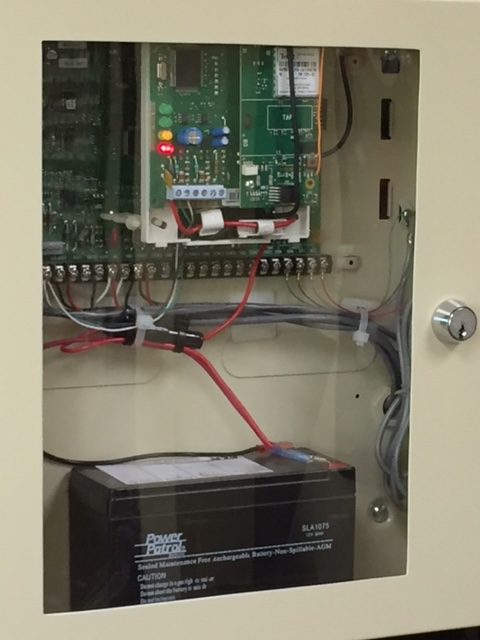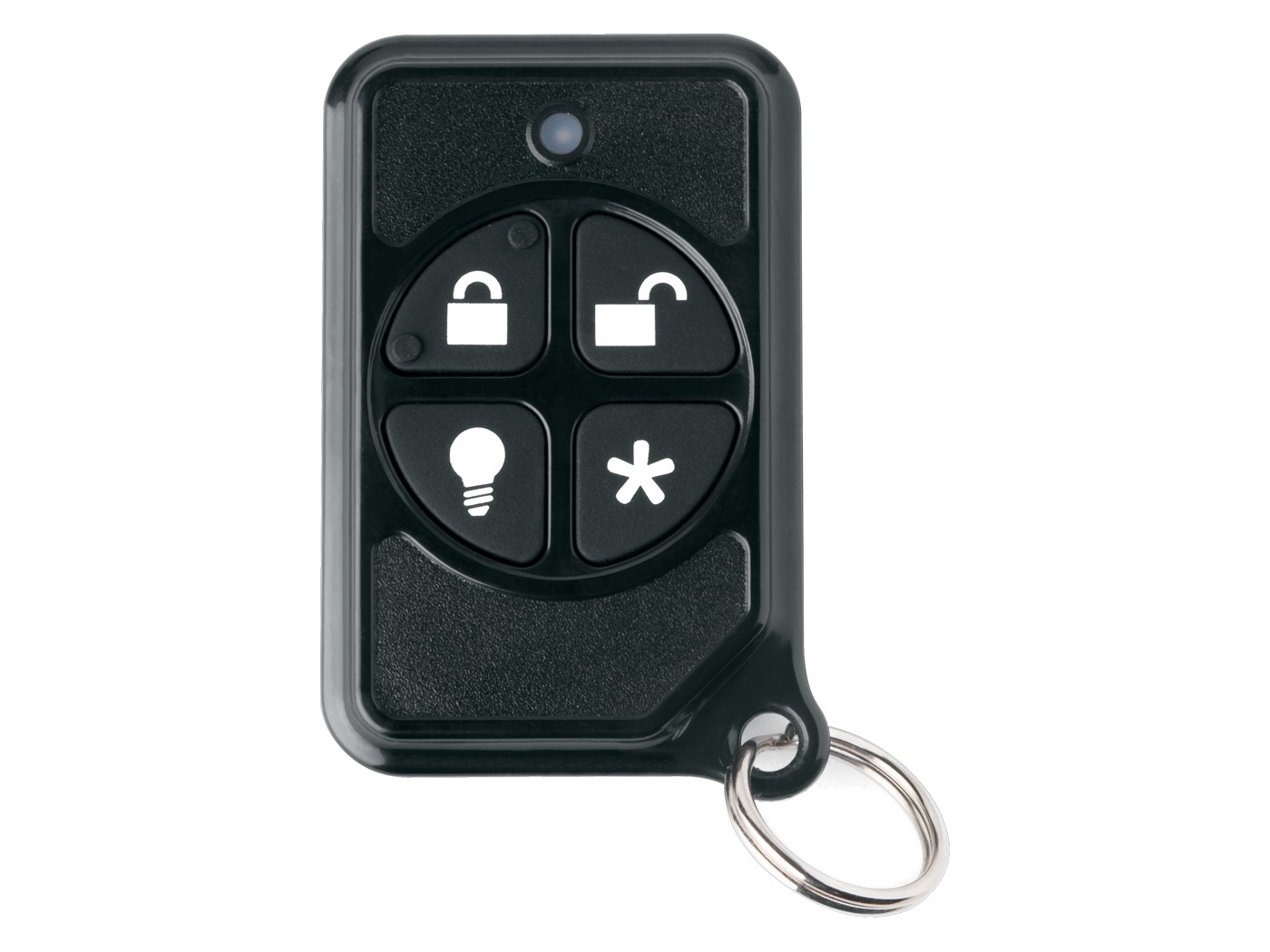The security alarm business is often, in many ways, a reactionary business. Many of our customers, after all, call us after experiencing a break-in rather than before. Likewise, our customers often take steps to add security to their existing systems after getting caught off guard by a situation they did not think of when installing their alarm. Therefore, we recommend taking some emergency preparation steps up front in case of both natural disasters and crime. In this post, we’ll examine the most important advice we give our alarm customers to help them prepare for emergencies. We will also take a look at other services we offer to help our customers remain proactive, rather than reactive.
Security System Emergency Preparation
In a way, a security system in and of itself is an “emergency preparation” measure. However, you should still take steps to make sure your that it operates at all times. Failing to plan ahead can leave your security system disabled or vulnerable just when you need it most. Let’s look at some of the ways we help our customers make sure that their security systems are always ready to send for help when needed.
Add Additional Alarm Codes Before You Need Them
We’ve discussed adding multiple alarm codes in our Vacation Security To-Do List. In addition to adding codes with specific users in mind, consider adding codes to your alarm system for future use. This helps tremendously if you need to let someone in your house to check on an emergency. For example, your water sensor may detect a flood during a vacation. In this case, you will likely need a friend, family member, or neighbor to check on the situation. Rather than give this individual your personal alarm code, you should have a secondary code available. Once you return home, you can change your “visitor” security code if desired. Your master alarm code allows you to add and delete other codes. The fewer people that know this code, the better. Instead of waiting until you know someone else will be inside your home, consider having a code ready ahead of time.
Install a Cellular Dialer
Cellular dialers ensure that your security system maintains contact with the central station at all times. Many burglars cut their victims’ home phone lines before breaking into a home. In our post on Smart Security System Design, we discussed the issues that people run into when they use a phone line to monitor their security system. Installing a cell dialer ensures that your security system will avoid these issues. Now a cut phone line, or even a lack of phone service due to bad weather or other factors, won’t affect your security system. We always recommend monitoring your security system with a cellular dialer rather than your home phone.
In addition, an interactive cellular dialer, such as ours powered by Alarm.com, adds extra security features to your alarm. Once you add this service, you can turn your security system on and off with your cell phone. You’ll also receive alerts sent directly to you when something happens to your security system. A low battery in a sensor, a power failure at your home, or any alarm event will create a notification if you wish. Our customers find this direct source of communication with their security system invaluable.

A backup battery, such the one pictured here by Power Patrol, can keep your security system running between one and two full days when your power goes out.
Stock Up on System and Contact Batteries
While a security system greatly reduces your risk of burglary, it only does so if it’s up and running. Locally, we experienced a unique October snowstorm back in 2011. This storm shut down highways and major roads. It also knocked out power for up to a week in many local communities. Of course, this wreaked havoc on many of our customers’ security systems. When we install a security system, we provide a backup battery. This allows your alarm to work for up to 48 hours without power. We also recommend having an extra battery or two in case of an extended power outage. You’ll want your security system up and running at all times. This is especially true if you have to leave home while your neighborhood doesn’t have power.
In addition, consider keeping a few batteries for your wireless contacts handy. Unlike your security system battery, which only powers your system when your electricity fails, your sensor batteries power your alarm components at all times. Having extra batteries on hand helps you in a couple different ways. First, it keeps you from having to make an inconvenient trip to buy more when your batteries do get low. More importantly, it helps keep your system up and running while you are away. If you receive an alert for a low battery, it’s much easier to get someone to stop by and change the sensor battery for you than it is to convince someone to buy you new batteries and then change them.

In addition to allowing to you arm and disarm your security system remotely, a wireless keychain remote, such as this one by Interlogix, also acts as a panic button.
Add Panic Devices to Your Alarm System
You may recall some details on panic buttons from our post on Panic Button Options for Your Security System. Panic devices allow you to immediately activate your security system, even if the system is disarmed. We always recommend having a device that allows you to do this. For some, our wireless keyfob remotes (pictured) act as their panic button. Holding down both the “arm” and “disarm” buttons for a few seconds activates the security system. Having the ability to create both a siren and a police response at all times is a critical component of security systems. We also offer panic buttons for other specific purposes as well. Medical panic buttons, for example, provide a valuable measure of security for elderly family members. Consider adding these devices now, rather than waiting until something happens to make you wish you had done so sooner.
Additional Recommended Emergency Preparation Steps
In addition to security systems, we do offer additional equipment and services to help you with emergency preparation. These tips, in particular, aim to minimize damage during emergency situations due to fire or crime. We also want you to have the ability to catch someone who’s committed a crime if necessary. Here are some additional recommendations that we often make to our customers, above and beyond a security system.
Install Fire Extinguishers in Your Home
Fire extinguisher installations in businesses follow strict guidelines regarding extinguisher type and placement. For homeowners, however, fire extinguishers remain completely optional. That being said, we do highly recommend adding extinguishers to your home. Why risk letting a manageable fire destroy your home because you failed to install an extinguisher? Even more importantly, why skip out on purchasing an affordable product that could save your life? Fire extinguishers also bring an additional potential benefit. Just as having a monitored security system often earns you a discount on your homeowners insurance rates, installing fire extinguishers often creates a discount as well.
Use Safes to Add Security to Valuables and Personal Belongings
We’ve discussed the importance of safes in our Plan to Increase Security for Your Small Business. The same sentiment holds true for residential applications. We also offer safes specific to a home installation versus business installations as well. Wall safes, for example, add security in two ways. First and foremost, they keep your jewelry, valuables, or important documents behind a secure, locked door. Additionally, wall safes are generally covered by a mirror or picture to keep them hidden. Your valuables remain out of site and out of mind in the case of a burglary.
This is especially true if you have a security system in place. Burglars don’t like to spend much time in the houses they break into. They’ll spend even less time in a house with a blaring siren and the police on the way. If you have your most valuable possessions locked up and hidden while this happens, you can feel assured that they will stay safe and sound.

A doorbell camera, such as this one by Alarm.com, lets you watch your front door for guests, potential intruders, package delivery, and even for pizza.
Design a Camera System That Watches Over Your Home
Just as with security systems, we often install camera systems after an incident, rather than before. Inevitably, homeowners in this situation bemoan this fact. Security systems do a great job notifying your home in the case of a burglary. Cameras can provide a valuable external security measure as well. A surveillance system can catch a potential burglar lurking around your property before breaking in. In an actual burglary or vandalism event, cameras give you a much better chance of catching the criminal. In addition, the presence of cameras alone acts as a deterrent to crime. Scoping out a home and finding cameras often leads burglars to move on to another house.
Adding a doorbell camera, specifically, helps at security to one of your home’s most vulnerable areas. If someone approaches your door to peak inside your home, you will have stored footage of the potential intruder. You will also have footage of anybody that takes a package from your doorstep. As we pointed out in our post on improving door security, criminals prefer breaking into homes through a door. Installing a doorbell camera — or multiple doorbell cameras– adds a tremendous amount of security.
Putting it All Together
We hope this post has given you some specific emergency preparation ideas that you can put to good use. If you have any questions about the information in this post, please do not hesitate to contact us. Perhaps you already own a home security system and wish to add equipment in case of an emergency. Or perhaps you’re starting from the ground up and want to incorporate some of these ideas into a new system. Either way, we’ll be happy to provide a free site survey to determine which emergency preparation steps will best serve you and your home.
Cover image credit: Alpha Stock Images – http://alphastockimages.com/ by Nick Youngson (http://www.nyphotographic.com/) at http://creative-commons-images.com/handwriting/e/emergency-plan.html. Used under permission of the CC BY-SA 3.0 License.
